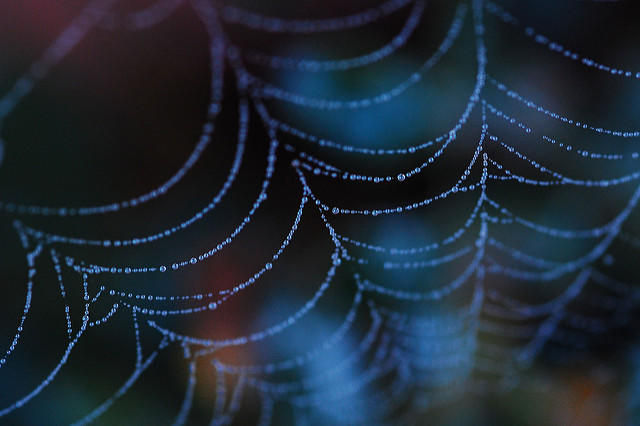Antibiotic spider silk that can heal wounds
Posted on January 12, 2017 by Anand Jagatia
Spider silk is pretty much the world’s coolest material. It’s extremely flexible, tougher than Kevlar, and weight for weight it’s stronger than steel. If that isn’t enough, there’s even evidence that some spider silks might have antimicrobial properties.

For example, peoples of the Carpathian Mountains reportedly used the webs from Atypus spiders as bandages. And experiments have shown that silk from the common house spider can inhibit the growth of some bacteria. Spider silk is also biodegradable, non-antigenic and non-inflammatory – which are all ideal properties for wound dressings.
Now, researchers from the University of Nottingham have taken things one step further by augmenting the natural properties of spider silk with the power of current antibiotics. Previous methods for going about this essentially involve soaking the fibres in an antibiotic solution, so that the molecules diffuse out. But, as reported in Advanced Materials, it’s also possible to modify the silk itself, chemically linking antibiotic molecules directly to the fibres.
The new technique builds on an existing method of producing artificial spider silk in the lab. Unlike silkworms, spiders are difficult to farm, as they have a nasty habit of eating each other when in groups. Instead, you can genetically modify other organisms to express spider silk proteins (called “spidroins”) themselves. This includes goats with spider genes that produce spidroins in their milk (no, really) or, in this case, E. coli bacteria that synthesise simplified spidroins that self-assemble into long fibres.
The team has tweaked this process to produce modified spidroins with amino acids not normally found in natural proteins. These amino acids contain reactive chemical groups that can then be selectively linked with almost any molecule you might want to attach. It’s an approach known as ‘click’ chemistry, and it works just like Lego, allowing scientists to combine useful chemical building blocks together quickly and easily.
“We attached an antibiotic called levafloxacin to the silk fibres, using a linker that responds to the pH of the solution,” explains Professor Neil Thomas, lead author on the paper. “As bacteria grow, they make the solution increasingly more acidic, which breaks down these bonds and releases the antibiotic molecules. Some bacteria also secrete enzymes which directly cleave the linker to the antibiotic.”
This means that the fibres ‘respond’ to the amount of bacteria in the surroundings, releasing more antibiotics as more bacteria grow. And because they are chemically linked to the fibre, the release of antibiotics is slower and more sustained than when the fibres are simply soaked. Over time, the silk proteins in the fibre would biodegrade as they are broken down by enzymes in the wound.
“We could also make different batches of protein with different antibiotics on them, so they could be combined synergistically to combat resistant bacteria,” says Neil.
It will be some time before we see spider silk wound dressings used in the clinic. But this is the first time that the click chemistry approach has been implemented in spider silk – and it has applications beyond antibiotics.
“We are also looking at using silk scaffold for tissue regeneration,” says Neil. “Using chemical cues so that we can select what cells we want growing on the scaffold, it would function like an extracellular matrix, which would be dissolved as the tissue grows and matures.”
Peter Parker, eat your heart out.
